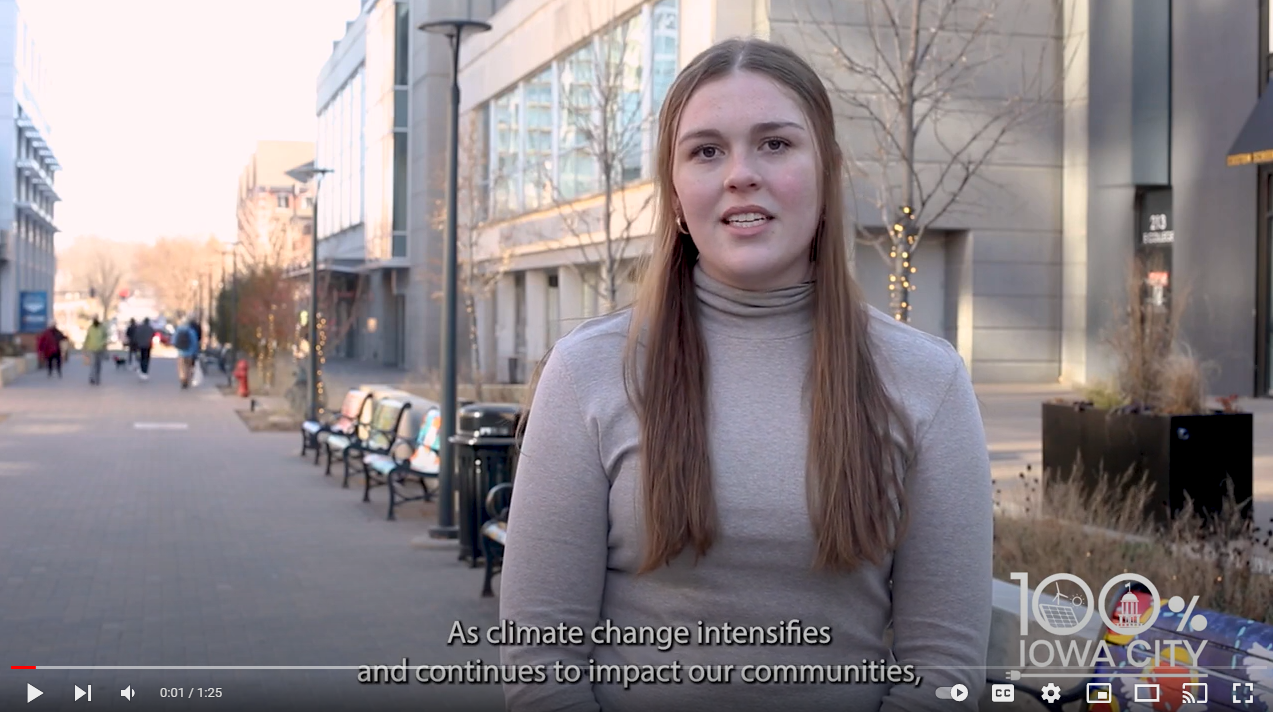

Show Your Support
Advocacy in Action
Join the Conversation
Frequently Asked Questions
What does 24/7 carbon-free energy mean?
In essence, 24/7 carbon-free energy requires that at any given moment, the electricity being utilized is coming from 100% emission-free sources. Today when you turn on your lights or power up an appliance, that power is supplied from a mix of clean energy as well as power from coal plants. A 24/7 vision seeks to close this gap and eliminate emission-producing power sources from the equation.
How is this different from other clean energy pledges?
A city or business may pledge to reach 100% clean energy, while still being served coal power. You may have heard your utility here, MidAmerican Energy, say it is on course to generate renewable power equal to 100% of its Iowa customers’ use. Unfortunately, that goal is mostly accounting, generating more renewables in some hours to cover the generation from the five coal plants they continue to operate within the state. That means we as Iowa customers are not really getting the 100% renewable energy being promised. A 24/7 clean energy pledge means clean energy in every hour with no coal pollution impacting Iowa communities.
Electricity generated from coal is also more expensive than energy generated from renewables, meaning Iowans are left paying higher rates just to provide greater profits for the utility, all while being exposed to the toxic waste and air pollution created by coal. This is a bad deal for Iowans and makes the choice obvious – we must accelerate the shift to clean energy.
Des Moines' 24/7 carbon-free energy goal
In early 2021, the Des Moines City Council unanimously adopted a resolution to transition the community’s electricity away from fossil fuels to clean energy sources around-the-clock, by 2035. This 24/7 goal is thought to be the first of its kind nationwide. Community support was vital for the adoption of this forward-looking goal. 100% Iowa worked with partners and engaged the public and policymakers in support of a community-wide goal. Read more about the campaign here.
How do we achieve 24/7 carbon-free energy?
Iowa has incredible wind and solar potential. Wind accounted for 57% of Iowa’s net electricity generation in 2020 and large-scale solar projects are becoming more prevalent. Iowa must continue this clean energy leadership and accelerate our renewable resources. As we meet our electricity needs with clean energy, we can leave behind polluting and expensive fossil fuels. The transition will be assisted by requiring energy efficiency measures so we can power more with less. Developing transmission and distribution infrastructure is also needed to integrate more renewables into the grid, especially as electricity demand is projected to increase. Finally, pairing renewable energy resources with storage solutions will allow for the excess electricity to be stored for when it’s needed.
Why do we need to make this specific commitment?
Businesses, state, and local governments across the country are setting 100% clean energy goals, but not every 100% clean energy resolution is created equal. Some “net-zero” clean energy goals allow for the use of carbon offsets to meet targets, meaning that an entity can pay someone else to remove a given quantity of greenhouse gas emissions from the atmosphere instead of doing it themselves. This approach will not phase out fossil fuel usage enough to prevent the worst impacts of climate change from taking place. Local governments have the opportunity to drive meaningful change by declaring formal 24/7 carbon-free energy commitments and implementing strategies with collaborative partners to achieve that goal. Learn more in our blog post about clean energy goals.
Why are local commitments important?
The consequences of inaction are severe. Local government can step up to the plate and enact measures to transition away from fossil fuels in lieu of timely action from Washington. Local clean energy solutions can cut emissions, create high-paying jobs, reduce energy bills, and build more resilient communities. Collectively, these commitments can create a ripple effect through the state, creating more demand for a just and equitable energy system. The time to act is now, and local leadership can move the needle forward.
